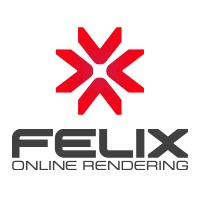What Is 3d Rendering Software?
With the help of 3D rendering software, users may produce beautiful and captivating 3D visualizations, animations, and photographs. Several industries, including architecture, interior design, product design, advertising, and entertainment, use this program extensively. To put it simply, 3D rendering software creates a final image that resembles a photograph by applying realistic lighting, textures, and materials to a 3D model.
It allows users to produce incredibly detailed and realistic photos by simulating real-world lighting and materials using sophisticated algorithms and processes. Saving time and money is one of the key advantages of using 3D rendering software. Users may rapidly visualize and refine design concepts with this program, which speeds up the decision-making process.
Because everyone can see a realistic picture of the finished product, it also makes it easier for the various stakeholders engaged in a project to communicate and work together. It's very amazing how much realism and detail 3D rendering software can provide. From the positioning of things to the lighting's angle and intensity, users have complete control over the image.
This degree of control and customisation opens up countless creative possibilities and makes it feasible to realize ideas in ways that were previously impossible. Furthermore, 3D rendering software is always changing; new features and enhancements are frequently added. This guarantees users have access to the newest tools and methods, allowing them to produce innovative and eye-catching designs.
A user-friendly interface, a large selection of configurable materials and textures, language support, and interoperability with other 3D modeling and animation applications are all crucial elements to consider when choosing 3D rendering software. It's also important to take into account the software company's pricing structure, including whether it's a one-time purchase or subscription-based, as well as the quality of customer service offered.
What Are the Recent Trends in 3d Rendering Software?
The field of 3D rendering software has advanced significantly in recent years, and architects, interior designers, product designers, and visual artists now depend heavily on it. The software market has grown more competitive due to the growing need for high-quality 3D visualizations across a range of industries, which has resulted in novel trends and features. Here are a few current developments in 3D rendering software that consumers should consider before making a purchase.
1. Real-time rendering: The move to real-time rendering is one of the biggest developments in 3D rendering software. This feature speeds up and improves the rendering process by enabling users to observe changes in their 3D models quickly. For people who need a fast response, such as architects presenting projects to customers, real-time rendering is quite helpful.
2. Virtual and augmented reality: As these technologies have grown in popularity, 3D rendering software has also changed to support them. Clients and stakeholders will find the experience more engaging as a result of these immersive technologies, which enable users to interact with their 3D models more realistically.
3. Artificial intelligence: The incorporation of artificial intelligence (AI) capabilities is another new trend in 3D rendering software. Users can save time and effort by using AI algorithms to help automate rendering processes like lighting and material selection.
4. Cloud-based rendering: In recent years, cloud-based rendering has become more and more popular, giving users access to more potent hardware and resources for rendering requirements. This trend enables scalability and collaboration in addition to faster rendering times.
5. Photorealism: As technology advances, users anticipate 3D renderings that are more lifelike and realistic. Because of this, 3D rendering software has kept becoming better at producing photorealistic effects, such as realistic lighting, texturing, and reflections.
6. Software integration: To improve workflow and offer a more fluid experience, 3D rendering software is now increasingly integrating with other applications, such as CAD software. Working with various software kinds is made easier by this trend, which enables users to import and export files with ease.
Benefits of Using 3d Rendering Software
3D rendering software is revolutionary for presenting and visualizing design concepts. Designers, architects, and even real estate brokers can now produce incredibly detailed and lifelike 3D models of their projects thanks to this cutting-edge technology. However, what are the precise advantages of utilizing 3D rendering software?
Let's investigate.
1. Accurate and realistic representation: The capacity of 3D rendering software to produce accurate and realistic 3D models is one of its primary benefits. Advanced features like shadowing, material textures, and lighting effects make the finished product nearly identical to an image.
2. Economic: Producing physical models in the conventional approach to product or architectural design can be costly and time-consuming. Compared to making physical models, designers may make adjustments and iterations more quickly and at a significantly lower cost using 3D rendering software.
3. Time-saving: In any design process, time is of the essence. Designers may produce 3D models in a few hours instead of days or weeks thanks to 3D rendering software, which speeds up and improves productivity.
4. Simple revisions: It is inevitable for design projects to undergo adjustments and revisions. This would require beginning from scratch using conventional techniques, which can be expensive and time-consuming. Nonetheless, designers may quickly make adjustments using 3D rendering software, which saves both time and money.
5. Improved communication: Showing stakeholders or clients 3D models can be an effective way to communicate. They are better able to comprehend and offer criticism since they have a visual depiction of the project.
6. More adaptability and customization: A variety of tools and capabilities provided by 3D rendering software enable designers to alter and modify their 3D models as they see fit. They can explore and create original and creative designs because of this versatility.
7. Lower risk: Choosing a design is difficult because it can be hard to see how it will turn out. Because designers can view the finished product before it is even constructed, 3D rendering software greatly lowers the chance of making expensive errors. All things considered, there is no denying that employing 3D rendering software improves the design process and saves time and money. It is a vital tool for any design project because of its sophisticated features and capabilities, which enable designers to realize their visions. Therefore, purchasing 3D rendering software is essential if you want to improve your design skills.
Important Factors to Consider While Purchasing 3d Rendering Software?
To make an informed choice, there are a number of crucial things to take into account when buying 3D rendering software. These elements include the software's features and capabilities, compatibility with your hardware and software, user-friendliness, customer service, and cost. First and foremost, it's critical to assess the 3D rendering software's features and capabilities.
To produce realistic and excellent 3D photos, look for software that provides a large selection of tools and effects. Consider elements like motion capability, texture mapping, and lighting options. Additionally, see if the program can be customized and integrated with other applications. Next, think about how well the software works with your software and hardware systems.
Verifying that the 3D rendering program is compatible with the processor, graphics card, and operating system of your computer is essential. Additionally, confirm that the rendering application can easily interface with any other software you intend to use. Another important consideration when buying 3D rendering software is ease of use.
Seek out software with an easy-to-use interface that provides training or lessons to get you started. Long-term, this will save you time and irritation and free up your time to concentrate on the creative elements of your project. Customer service is yet another important factor. Choose software that provides dependable customer service, such as phone, email, or live chat.
This is crucial in case you run into any problems or have inquiries concerning the software. To make sure the program remains current and operates at its peak, find out if it provides frequent updates and problem patches. Finally, think about how much the 3D rendering program costs. Although there are free solutions, they might not offer all the functionality you need or have restrictions. More powerful features are frequently available with paid software, but make sure to evaluate features and costs across many options to obtain the best deal.
What Are the Key Features to Look for in 3d Rendering Software?
Before completing your purchase, you should think about a few important factors while selecting the best 3D rendering software. The quality and effectiveness of your 3D rendering can be significantly impacted by these aspects, providing you with the greatest outcomes for your projects.
1. Rendering Speed: The rendering speed of 3D rendering software is one of the most crucial aspects to consider. You can finish your work and go on to the next assignment more quickly if the software can produce your creations more quickly. To guarantee quick and effective rendering, look for software that makes use of your computer's hardware and sophisticated rendering algorithms.
2. Realistic Lighting and Textures: Your 3D models should have realistic lighting and textures produced by a decent 3D rendering program. This is essential for producing realistic and captivating virtual environments. To get the most realistic results, look for software that supports sophisticated lighting and material options, like globally illuminated scenes and physically-based rendering.
3. Compatibility and Integration: Selecting software that works with both your operating system and any other 3D modeling programs you might use is crucial. This makes it easy to integrate your 3D models into the rendering software and facilitates a more efficient workflow. For even more compatibility and tool interaction, search for software that has a plugin or API system.
4. User-Friendly Interface: Your productivity and overall software experience can be significantly improved by an intuitive and user-friendly interface. Choose software with a clear, well-structured interface that includes tools and menus that are simple to use. To further enhance your efficiency, certain software may also provide shortcut keys and configurable layouts.
5. Flexibility and Customization: Since each project is distinct, it might call for various rendering parameters and methods. To meet your unique needs, a decent 3D rendering program should be flexible and customizable. Adjustable lighting, material, and rendering style options are a few examples of this.
6. Cost and license: Lastly, think about the software's price and license alternatives. Certain applications may require a subscription, while others may only require a one-time payment, depending on your usage and budget. To make sure you are getting the most for your money, carefully read the licensing conditions. When selecting the best 3D rendering software for your projects, you can make an informed choice by keeping these important characteristics in mind. To choose the ideal software for your purposes, don't forget to take into account your unique requirements as well as the kinds of tasks you will be working on.
Why Do Businesses Need 3d Rendering Software?
Businesses are continuously searching for methods to differentiate themselves and leave a lasting impact on their customers in the current digital era. 3D rendering software is useful in this situation. With the use of this effective technology, companies can produce realistic, lifelike images of their goods, layouts, and environments. Marketing is one of the primary reasons why companies use 3D rendering software.
Businesses must present their items in the most enticing and eye-catching manner possible given the growth of e-commerce. They may accomplish this by using 3D rendering software to produce stunning, lifelike visuals and animations that can be utilized in social media, websites, and ads. Moreover, companies that provide architectural, interior, and product design services also need 3D rendering software.
It enables them to produce precise and thorough illustrations of their designs, which can assist clients in seeing the finished product and making wise choices. In the end, this might help the client and the company save time and money. Furthermore, the development and manufacturing processes also heavily rely on 3D rendering software. Businesses can identify any potential problems or design defects in their products before they go into production by building 3D models of them.
This can guarantee that the finished product satisfies the required specs and avoid expensive errors. 3D rendering software can enhance internal communication and teamwork in addition to marketing, design, and production. Teams can quickly exchange ideas, discuss them, make adjustments in real time, and make sure everyone is on the same page by creating interactive and 360-degree views of designs.
All things considered, companies need 3D rendering software to produce visually attractive, accurate, and effective representations of their goods and designs. It can help with design and development, boost marketing efforts, and facilitate team communication. Businesses can gain a competitive edge and easily accomplish their objectives by investing in this software.
How Much Time Is Required to Implement 3d Rendering Software?
The software in question and the user's level of experience can affect how long it takes to implement 3D rendering software. In general, integrating and using 3D rendering software can take a few hours to a few weeks. Installing the application on your device is the first step in using 3D rendering software.
Depending on the size of the software and the speed of your internet connection, this process usually takes less than an hour, but it could take longer. The user must become acquainted with the functions and interface of the software after installation. Depending on the software's complexity and the user's level of previous 3D rendering experience, this could take a few hours to several days.
The user can begin producing 3D models and designs after becoming familiar with the fundamentals of the program. The intricacy and scale of the project will determine how long it takes to finish using 3D rendering software. Complex projects can take days or even weeks to finish, but simple designs can be finished in a few hours.
Using 3D rendering software entails not only building 3D models but also applying rendering techniques like lighting, shading, and texturing to improve the finished product. Although it may take longer to implement overall, this is essential to getting realistic and high-quality results. It's crucial to remember that the user's degree of software skill may also affect how long it takes to implement 3D rendering software.
Projects may be finished more quickly by people with more 3D rendering experience than by those who are unfamiliar with the program. In conclusion, depending on the particular program and the user's degree of competence, the time needed to install 3D rendering software can vary from a few hours to several weeks. Users can reduce the amount of time required for implementation and improve their efficiency using 3D rendering software with practice and consistent use.
What Is the Level of Customization Available in 3d Rendering Software?
With the many customization options provided by 3D rendering software, users may produce beautiful and lifelike renderings for a variety of industries, including product design, film and animation, interior design, and architecture. When selecting the best 3D rendering software for your particular requirements, it is crucial to take into account the degree of customization that is available. The degree of customisation offered by a 3D rendering program is one of the most important things to consider.
This is the capacity to manage and alter different rendering components, including lighting, textures, materials, and cameras. You have more control over the end product and can better adapt it to your particular project if a software program has more customization possibilities. There are two primary categories of 3D rendering software customization: basic and advanced.
Changes to fundamental materials and textures, camera angles, and lighting hue and intensity are examples of basic customization possibilities. Beginners or those who need to produce basic renderings fast might use these choices. Advanced customization choices, on the other hand, provide a higher degree of control over the rendering procedure.
This includes adjusting camera settings like depth of field and focal length, producing unique materials and textures, and fine-tuning lighting conditions. Professionals or individuals wishing to produce incredibly realistic and detailed renderings will find these tools suitable. The user interface of the software is another element that influences the degree of customization.
While some applications may have a more sophisticated interface but provide more customization possibilities, others may have a more straightforward and user-friendly design with fewer customization options. When selecting the software's interface, it is crucial to take your degree of expertise and the complexity of your tasks into account. Furthermore, certain 3D rendering programs could provide add-ons or plugins that increase the degree of customisation.
A more individualized and customized rendering experience is made possible by these plugins, which can offer sophisticated features and tools not found in the core program. In conclusion, producing realistic and high-quality renderings depends heavily on the degree of customisation offered by 3D rendering software. To select the best software for your projects, you must carefully consider your unique requirements as well as the customization choices available. To make an informed choice, don't forget to take into account elements like project complexity, skill level, and available plugins.
Which Industries can benefit the most from 3d Rendering Software?
Using 3D rendering software can be very advantageous for industries like advertising, product design, interior design, and architecture. This potent technology transforms how these sectors produce and display their designs, giving their customers a more realistic and engaging experience. In order to help clients better grasp the finished product and make educated decisions, architects in the field can use 3D rendering software to transform their designs into realistic renderings.
Additionally, this saves time and money by lowering the likelihood of misunderstandings and expensive modifications. Before any actual alterations are done, clients may see how the room will feel and appear thanks to interior designers' use of 3D rendering software to display their plans in a virtual environment. This reduces the need for pricey showroom mockups and helps clients see the final product, which facilitates design decision-making.
Product designers can make design adjustments and enhancements before manufacturing by using 3D rendering software to produce realistic and comprehensive renderings of their products. In addition to saving money and time, this also aids in spotting possible design errors and raises the standard of the finished product.
The advertising business may do away with costly photo shoots by using 3D rendering software to provide photorealistic photographs of locations and products. More creative freedom and quick modifications are made possible by this, leading to campaigns that are both economical and aesthetically pleasing. Furthermore, sectors like real estate, construction, and urban planning, where successfully presenting and visualizing designs is essential, can also benefit from 3D rendering software. By giving stakeholders a comprehensive view of the project, it improves comprehension and lowers the possibility of expensive errors.
Conclusion
In conclusion, the quality and effectiveness of your design process can be significantly improved by selecting the best 3D rendering software for your requirements. As we've covered, there are a number of things to take into account when making this choice, including your budget, the needs of the project, and your desired features. Make sure to read reviews, consult with other industry experts, and conduct an in-depth study on the features and restrictions of each software alternative before choosing one.
Utilize free trials and demos as well to acquire a sense of the software's workflow and user interface. The ideal 3D rendering program for you will ultimately rely on your own requirements and tastes. Even if you are a novice who is just beginning to experiment with 3D rendering or an experienced expert seeking more sophisticated features, there is software available to help you realize your ideas.
To make an informed choice that will ultimately help your projects, start with this guide and keep learning about the always-changing field of 3D rendering technology.










![Render[in] logo Render[in] logo](https://media.topsoftwareadvisor.com/vendors/software-products/software-logo/1728534607_render[in]-logo.jpg)











